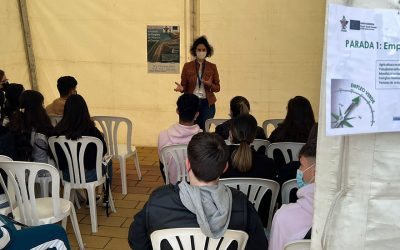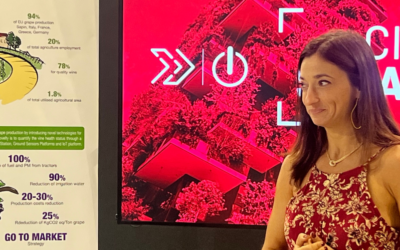Are PTSDs an Opportunity or a Threat to the Territory?
If we journey back in time to the year 2020, when the pandemic was just beginning, a term unfamiliar to most emerged: the NEXT Funds. These were designed to mitigate the pandemic’s effects by revitalizing cities, boosting industry, reviving tourism, transforming mobility, etc. After months of anticipation while we acclimatized to the term, a new concept surfaced: the PRTR (Recovery, Transformation, and Resilience Plan).
April 1, 2024
Before we knew it, terms like NEXT Funds or PRTR became part of our daily discussions, along with other concepts such as PERTES. Accompanied by millions of euros for both the private and public sectors, these terms represented actions and initiatives promised by the NEXT Funds. These Funds, in the summer of 2021, began to materialize into calls for proposals and thousands of letters published in the State Bulletins, with nearly fleeting application deadlines.
Currently, numerous calls have been announced for both public and private sectors, focusing on revitalizing commerce and buildings, advancing digital transformation, enhancing energy efficiency, and including the recovery of tourism as a key sector for national socioeconomic development.
Covering all these would take up the entire Tourism Report. However, among these, I wanted to highlight the Sustainable Tourism Destination Plans (PTSD), a term now ingrained in anyone connected to the tourism industry.
From the late 2021 call to the present, there have been three extraordinary calls under the PTSD banner, amounting to 517 projects and over 1.68 billion euros.
Another striking figure, or rather alarming, is the degree of execution, which barely grazes 10%. By December 31, 2024, it must reach 50% for the 2021 plans, 35% for those of 2022, and 15% for the 2023 plans.
Analyzing the data, the execution seems challenging, or at least not reflecting ease. What’s happening? Are PTSDs an opportunity or a threat to the territory? Is the industry ready for a swift response? Time, undoubtedly, seems to be against us.
From the city’s perspective, those of us working towards their future agree that PTSDs are comprehensive projects set to enhance destinations with digitization, environmental care, climate change combat, sustainability, and competitive sector strategy. However, looking at the data, specifically the execution rate, the balance tilts the other way, suggesting it might be wiser to set aside execution and focus on new opportunities.
“Cooperation and co-governance, in other words, collaborating and leveraging key stakeholders in their areas of expertise.”
But can any beneficiaries (cities, councils, consortia, communities) turn their backs on such significant funding, especially for tourism? The answer is a resounding NO.
So, how can we achieve success after EDUSI results that were less than satisfactory for the territory?
The answer lies in clear cooperation and co-governance, or put another way, in collaborating and leveraging key stakeholders in what they do best. Beneficiaries have already defined their intentions, and now it’s time to formalize them in documents, the much-feared tender specifications. Now, it’s the industry’s turn, along with academia, and products and services. And of course, the citizens, who watch with keen interest for the outcome.
Full report link here.
Verónica Ramírez. Director of Operations, Smart City Cluster
+ Related post
Know the advantages of being associated
Smart City Cluster enhances collaboration among its partners, favoring research, development and innovation in the different solutions and technologies aimed at the development of smart cities.
Smart City Cluster is an alliance of private companies and institutions that work for the development of smart cities.



